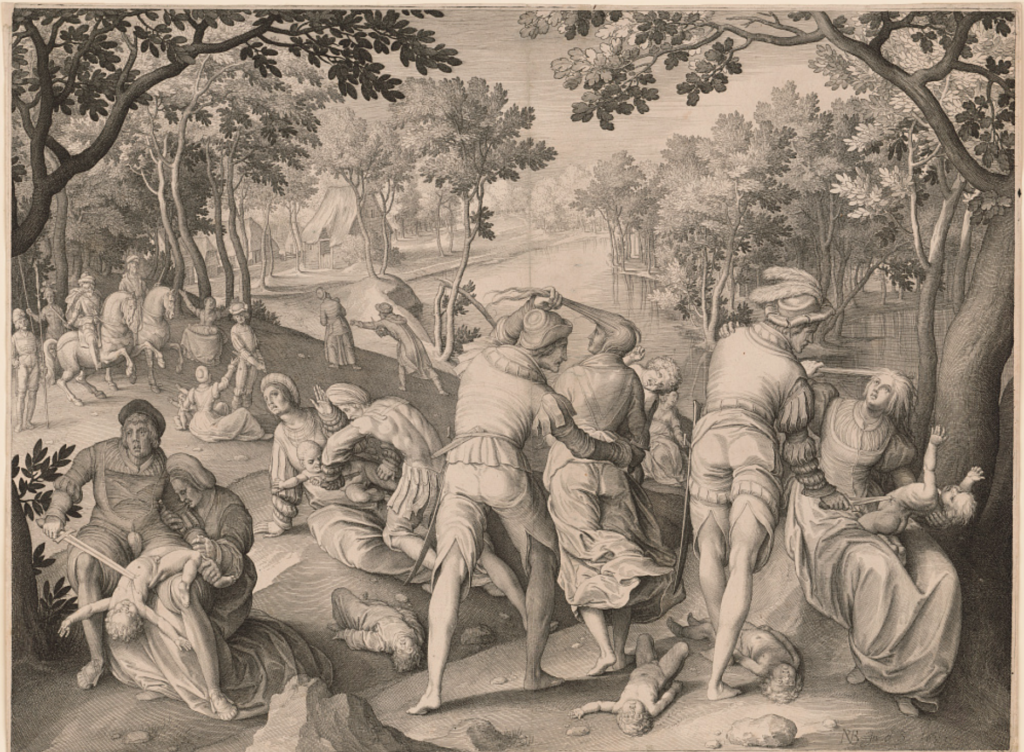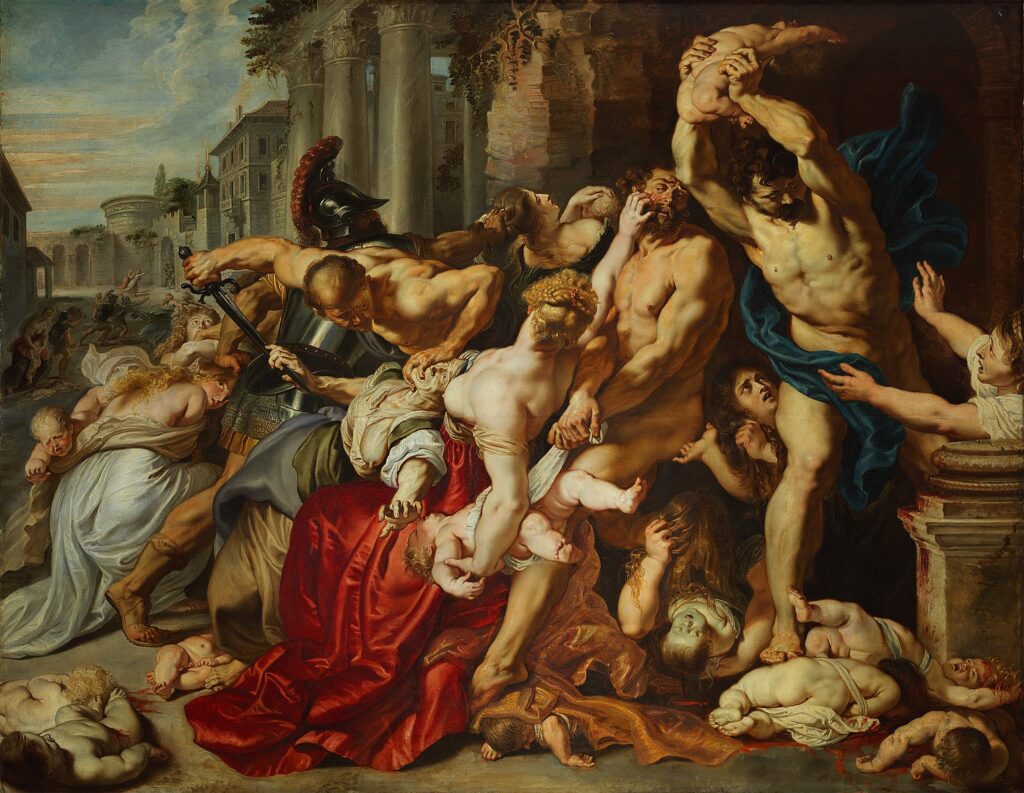
The liturgical calendar is filled with the heroic examples of apostles, prophets, confessors, and teachers. So why, only four days into Christmas, has the historical Church in her wisdom directed us to remember these 14,000 executed infants? The answer is both simple and complex, and it’s certainly worth pondering in the darkness in the dead of winter in the very time when Christ the light appears.
First, we remember the Holy Innocents as just that, the innocent children who died a martyr’s death for Jesus’ sake shortly after his nativity. But more than a mere historical connection, we remember the Innocents whose bloodshed signals from Jesus’ earliest years the purpose for which he came. Herod ordered the death of the boys to snuff out the king who threatened his kingdom, even as he did his own sons! But this King came to give his own life, and so within Christmas we see the purpose of the incarnation. Jesus came to lay down his life that all who die might live! Furthermore, the remembrance of the Innocents draws a baptismal connection to Christmas because they received the scarlet bath of martyrdom for Jesus’ sake.
Second, taking a different look at this event, we recall another scene of a newly born child who escaped the terror of a threatened king, or rather, a pharaoh. Interestingly, the record of the Holy Innocents is found only in the Gospel of Matthew, who is especially concerned with illumining Jesus as the new Moses, as one who ascends the mountain to preach the law in the Sermon on the Mount as well as the one who is spared in the tossing river basket while bloodshed prevails around him. From these many parallels, we see in Jesus the new and greater Moses whom the prophets themselves had foretold.
Finally, to tie it all together, the remembrance of the Holy Innocents is an occasion for the triumphant song that even though Rachel weeps for her children, they are not lost forever, and one day she shall weep no more! In our militant hymn we sing, “O Rachel, cease your weeping; they rest from earthly cares! Lord, grant us crowns as brilliant and faith as sure as theirs” (LSB 517:9). Those who receive the baptismal washing receive the same life in which the martyrs died through faith, making this a solemn day of Christmas, but a merry one yet!

Brief history
The feast of the Holy Innocents is located within the Christmas octave, reflecting its juxtaposition within the Scriptures to the nativity narrative. In relation to other holidays on the liturgical calendar, it falls after two other important days in the Christmas octave; the other protomartyr, St. Stephen (26th), and St. John (27th). Third come the Holy Innocents, whose memory the Church has honored this day as early as the fourth century and whose day it eventually held in common by the sixth century.
Collect
O God, whose martyred innocents showed forth Thy praise not by speaking but by dying: mortify all vices within us, that our lives may in deed confess Thy faith which our tongue uttereth; through Jesus Christ, Thy Son, our Lord, who liveth and reigneth with Thee and the Holy Ghost, ever one God, world without end. Amen.

Lessons
Resources
Issues, Etc. interview with the Rev. Dr. Jeff Gibs on the slaughter of the Holy Innocents
Propers found in Daily Divine Service Book: A Lutheran Daily Missal, edited by the Rev. Heath Curtis
References:
1. Pfatteicher, Philip H. Festivals and Commemorations. Augsburg Publishing House. 1980.
2. Weedon, William. Celebrating the Saints. Concordia Publishing House. 2016.
Images:
1. Massacre of the Innocents, Nicolaes Bruyn, Belgium, 1621.
2. Massacre of the Innocents, Peter Paul Rubens, Belgium, 1611.
3. Rachel Crying For Her Children. Marcov Monastery, mid 14th century.



